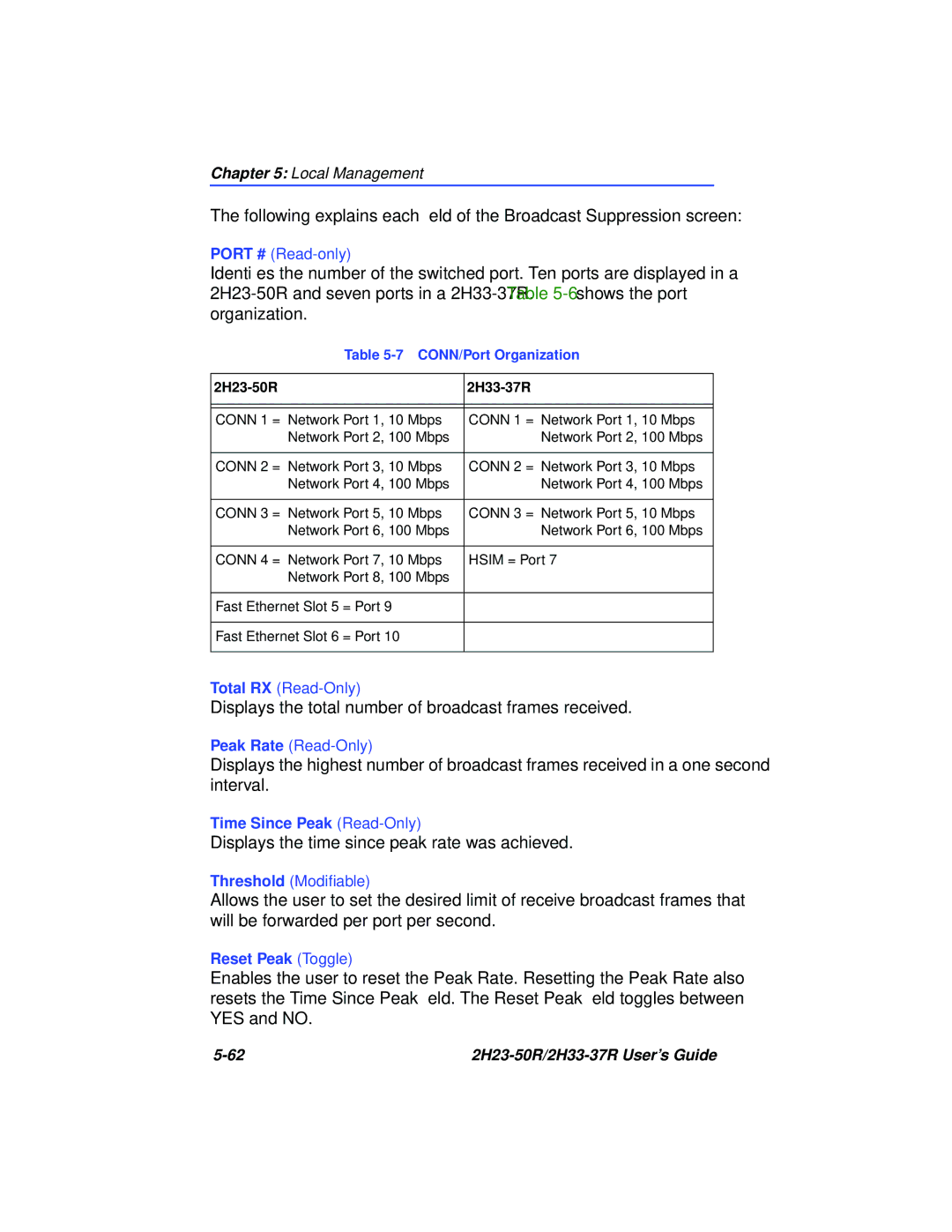Chapter 5: Local Management
The following explains each field of the Broadcast Suppression screen:
PORT #
Identifies the number of the switched port. Ten ports are displayed in a
Table 5-7 CONN/Port Organization
|
|
| |
|
|
|
|
|
|
|
|
CONN 1 = Network Port 1, | 10 Mbps | CONN 1 = Network Port 1, | 10 Mbps |
Network Port 2, | 100 Mbps | Network Port 2, | 100 Mbps |
|
|
|
|
CONN 2 = Network Port 3, | 10 Mbps | CONN 2 = Network Port 3, | 10 Mbps |
Network Port 4, | 100 Mbps | Network Port 4, | 100 Mbps |
|
|
|
|
CONN 3 = Network Port 5, | 10 Mbps | CONN 3 = Network Port 5, | 10 Mbps |
Network Port 6, | 100 Mbps | Network Port 6, | 100 Mbps |
|
|
|
|
CONN 4 = Network Port 7, | 10 Mbps | HSIM = Port 7 |
|
Network Port 8, | 100 Mbps |
|
|
|
|
| |
Fast Ethernet Slot 5 = Port 9 |
|
| |
|
|
| |
Fast Ethernet Slot 6 = Port 10 |
|
| |
|
|
|
|
Total RX
Displays the total number of broadcast frames received.
Peak Rate
Displays the highest number of broadcast frames received in a one second interval.
Time Since Peak
Displays the time since peak rate was achieved.
Threshold (Modifiable)
Allows the user to set the desired limit of receive broadcast frames that will be forwarded per port per second.
Reset Peak (Toggle)
Enables the user to reset the Peak Rate. Resetting the Peak Rate also resets the Time Since Peak field. The Reset Peak field toggles between YES and NO.
|
